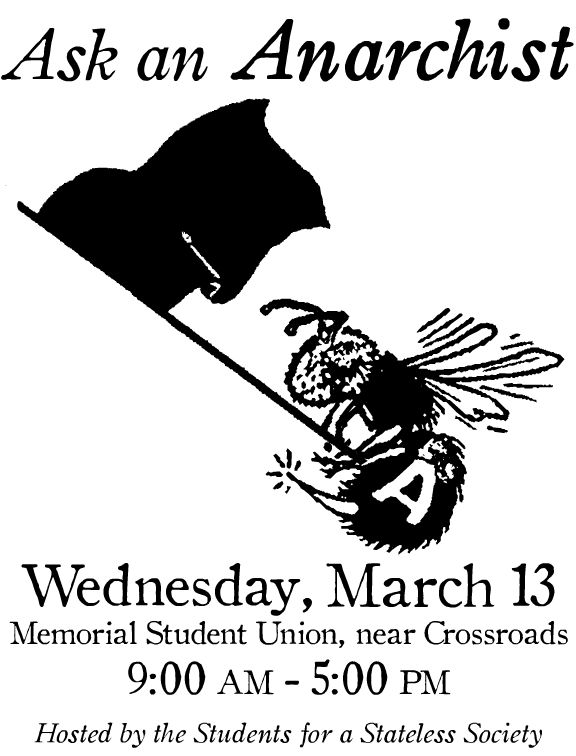Good news, everyone. From Crispin Sartwell’s blog comes the announcement that his study on Political Aesthetics is now available for free online:
cornell tells me we can’t expect a paperback of political aesthetics anytime soon, so i’m putting the pdf of the proofs up onlne. i really think this is my best book.
— Crispin Sartwell at cheese it, the cops! (25 February 2013)
PDF is available here through Google Docs, and I’ve mirrored a copy here. Contents and a bit of the thesis:
Crispin Sartwell, Political Aesthetics
- Introduction: The Idea of Political Aesthetics
- Ch. 1. Leni Riefenstahl Meets Charlie Chaplin: Aesthetics of the Third Reich
- Ch. 2. Artphilosophical Themes
- Ch. 3. Dead Kennedys and Black Flags: Artpolitics of Punk
- Ch. 4. Prehistory of Political Aesthetics
- Ch. 5. Red, Gold, Black, and Green: Black Nationalist Aesthetics
- Ch. 6. Arthistorical Themes
- Ch. 7. Political Power and Transcendental Geometry: Republican Classicism in Early America
- Ch. 8. Conclusion: Political Styles and Aesthetic Ideologies
- Appendix: Suggestions for Further Study
Introduction: The Idea of Political Aesthetics
There are, of course, many connections between art and politics. For example regimes of all sorts–democratic, monarchical, communist, and all the rest–use and repress the arts in various ways for propagandistic purposes, to control or deflect public opinion. And much of what we take as fine art has explicitly political themes; this is truer now than ever, or was truer twenty years ago than ever, as artists expressed feminist, antiracist, animal rights, or AIDS activist ideology in their work, for example. These are important areas for investigation. But what I am calling the program or inquiry of political aesthetics begins with a claim that I think is stronger and more interesting.
Not all art is political, but all politics is aesthetic; at their heart, political ideologies, systems, and constitutions are aesthetic systems, multimedia artistic environments. The political content
of an ideology can be understood in large measure actually to be–to be identical with–its formal and stylistic aspects. It’s not that a political ideology or movement gets tricked out in a manipulative set of symbols or design tropes; it’s that an ideology is an aesthetic system, and that this is what moves or fails to move people, attracts their loyalty or repugnance, moves them to act or to apathy. But the political function of the arts–including various crafts and design practices–is not merely a matter of manipulation and affect: the aesthetic expression of a regime or of the resistance to a regime are central also to the cognitive content and concrete effects of political systems. . . .
— Crispin Sartwell (2010), Political Aesthetics
